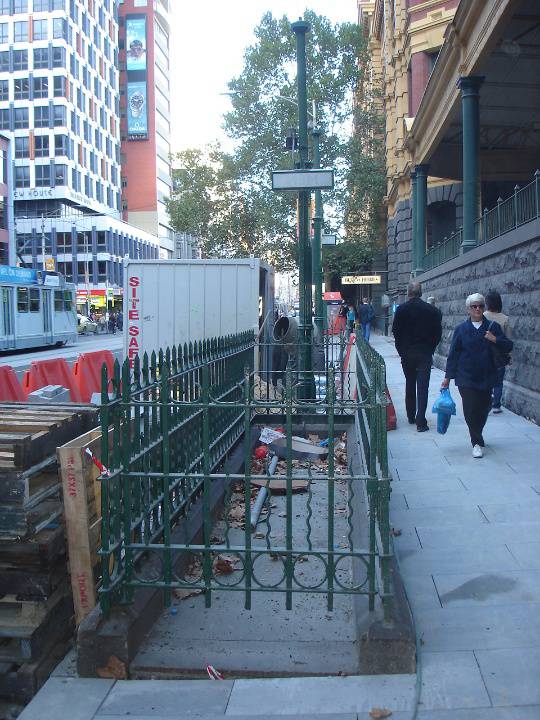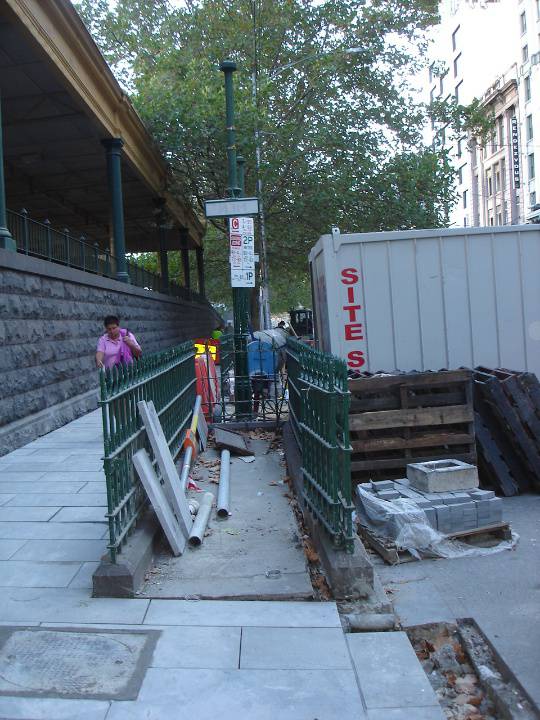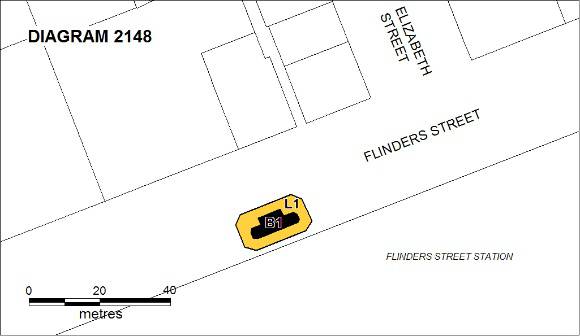| Back to search results » | Back to search page » |
|
UNDERGROUND PUBLIC TOILETS
LocationFLINDERS STREET MELBOURNE, MELBOURNE CITY
File NumberPL-HE/03/0767LevelRegistered |
|
Statement of Significance
The men's underground public toilet in Flinders Street, built in 1918, is one of a number built in Melbourne in the early twentieth century in response to increasing public demand for public toilet facilities in the city that were both sanitary and discreet. The first public toilet, a urinal for men only, had been built in 1859, following the opening of the Yan Yean water supply in 1858. But street-level toilets were regarded as indecently open to public view, and without an underground sewerage system, the waste discharged directly into the gutters. Underground toilets, which removed toilets from public view, had already been built in Scotland, England and Sydney. The establishment in December 1890 of the Melbourne & Metropolitan Board of Works, responsible for building and maintaining an underground sewerage system, provided the necessary infrastructure. The first underground public toilet in Melbourne, which included facilities for women as well as men, was opened in Russell Street in 1902. Several more were built before World War I: a men's in Queen Street in 1905; a men's and women's in Elizabeth Street opposite the Queen Victoria Market in 1907; a men's in Swanston Street in 1909 (now demolished); a women's in Elizabeth Street outside the GPO in 1910 (a men's was added in c1927); and a women's outside the Town Hall in Collins Street in 1914 (a men's was added c1960). Four more were built in the inter-war period, in East Melbourne, West Melbourne and Carlton. The men's underground public toilet is on the footpath on the south side of Flinders Street west of the junction with Elizabeth Street, outside Flinders Street station. Above ground elements consist of wrought iron railings on bluestone curbing, iron gates and cast iron posts. All the underground toilets from this period have similar wrought iron railings and gates, and cast iron sign posts that have been maintained and repainted over the years. When built it had stairways at each end, leading down to a space with a tiled floor and walls, five urinals, three WCs, a wash-basin and a store cupboard. In 1962 it was remodelled: at ground level new illuminated signs were added to the existing ventilation pipes, and the railings and ventilation pipes were painted; below ground the floor was laid with terrazzo, the stair handrails replaced, and new stainless steel urinals, an extra wash basin, and a cleaners' room were installed. The toilet has now been decommissioned and the entrances are covered by concrete slabs. Why is it significant? The underground public toilet in Flinders Street is of historical and architectural significance to the state of Victoria. How is it significant? The underground public toilet in Flinders Street is of historical significance as one of the oldest underground public toilets in Australia. It reflects an important era of sanitary, technological and social reform in the early twentieth century. It is significant as a reflection of attitudes to public decency in the early twentieth centuries. It is a reflection of a major engineering achievement, the development of Melbourne's underground water, drainage and sewerage system, and the advances in sanitation and public health made possible, following the establishment of the Melbourne & Metropolitan Board of Works in 1890. This made possible the transformation of Melbourne from a smelly, disease-ridden city to a modern metropolis. The underground public toilet in Flinders Street is of architectural significance as an early example of an unusual building type, and of early twentieth century civic design. Although the interior has been altered the remaining railings, gates and cast iron columns are of interest as examples of street furniture of the period.
Group
Community Facilities
Category
Public Lavatory






